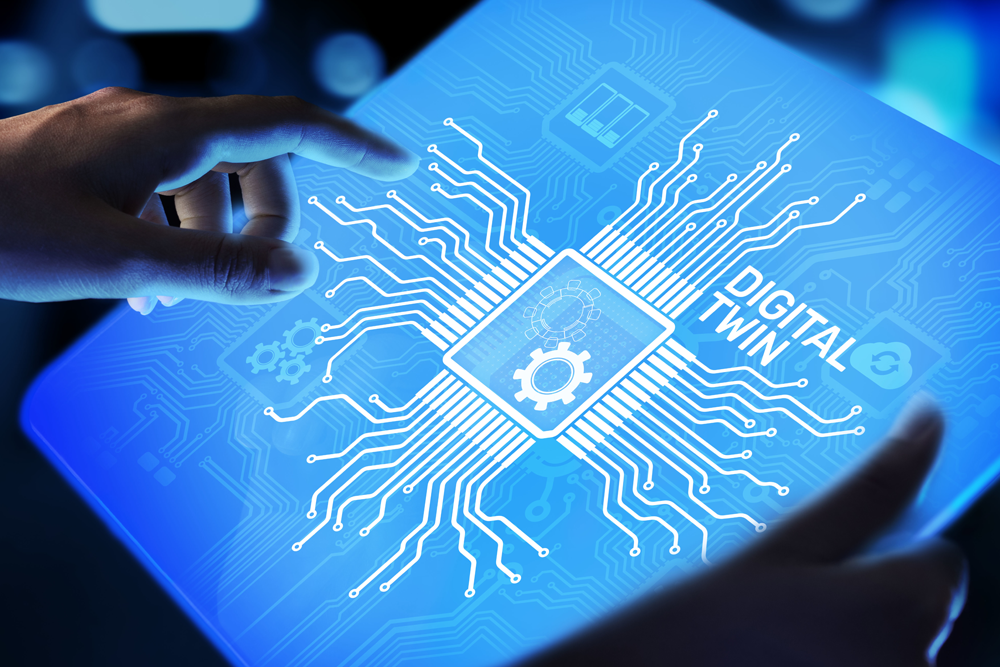7 Amazing Examples of Digital Twin Technology In Practice
2 July 2021
Wouldn’t it be extraordinary to simulate plans or build what-if scenarios for the products, facilities, and processes you wished to change before you actually put real-world resources behind real-world implementation? That’s the promise of digital twins. And, many businesses and industries are taking advantage of this promise as these 7 amazing examples of digital twin technology illustrate.

What is a digital twin?
As an exact digital replica of something in the physical world, digital twins are made possible thanks to Internet of Things (IoT) sensors that gather data from the physical world and send it to machines to reconstruct. While the concept of a digital twin has been around since 2002 when Michael Grieves at the University of Michigan first used the terminology, it was IoT technology that made it affordable and accessible to many more businesses. By creating a digital twin, insights about how to improve operations, increase efficiency or discover an issue are all possible before it happens to whatever it’s duplicating in the real world. The lessons learned from the digital twin can then be applied to the original system with much less risk and a lot more return on investment.
When you take a minute to consider all the ways this could be useful for businesses, it’s easy to see how the potential for digital twin technology is just about limitless. That’s likely why digital twin technology was included on Gartner’s Top 10 Strategic Technology Trends for 2017 and 2018. Gartner predicted there would be 21 billion connected sensors by 2020, making digital twins possible for billions of things.
7 amazing examples of digital twin technology
Companies use digital twin technology for many reasons including to improve ongoing operations, train employees and to test new products or procedures before launching them to the real world where it becomes more expensive and complicated to fix any issues.
Oftentimes artificial intelligence and machine learning are used to analyze the model of operations represented by the digital twin no matter where the real facility is located—even if the equipment is in space. NASA used pairing technology, the precursor to digital twin technology, from the earliest days of space exploration to solve the issue of operating, maintaining and repairing systems when you aren’t near them physically. This was precisely how engineers and astronauts on Earth determined how to rescue the Apollo 13 mission. Today, digital twins are used at NASA to explore next-generation vehicles and aircraft.
Digital twin technology can help personnel get comfortable with Internet of Things implementation and automation because they have the opportunity to simulate the application prior to it going live. The lessons learned and opportunities uncovered through a digital twin can then be applied to the physical environment.
Since digital twins can give a real-time view of what’s happening with equipment or other physical assets, they have been very helpful in manufacturing to reduce maintenance issues and ensure optimal production output. Chevron expects to save millions of dollars in maintenance costs from the digital twin technology they will have deployed on equipment by 2024 in oil fields and refineries.
Similar to the benefits in manufacturing, digital twins can revolutionize healthcare operations as well as patient care. A digital twin of a patient or organs allows surgeons and health professionals to practice procedures in a simulated environment rather than on a real patient. Sensors the size of bandages can monitor patients and produce digital models that can be monitored by AI and used to improve care.
At the Spring Festival Gala aired on China Central Television, the four human hosts were joined by an AI copy of themselves—their very own digital twin created by ObEN. They are more than computer-generated avatars because they used machine learning, natural language processing, and computer vision to build virtual copies of the hosts. Future applications for this technology include plans to build AI-powered teachers, nurses, and doctors.
Digital twin technology has even been deployed to refine Formula 1 car racing. In a sport where every second counts, a simulation can help the driver and the car team know what adjustments can improve performance.
There is even a digital twin of Singapore! Imagine all the variables that go into the management of a city. Digital twin technology helps city planners understand and improve the efficiency of energy consumption as well as many applications that can improve life for its citizens.
Where else do you think a virtual replication of a physical object would come in handy? From wind farms to modernizing farming and testing smartphones to improving services, there is really no limit to how digital twins technology can positively impact our world.
Related Articles
Dreamforce 2025: Why I’m Excited About Salesforce’s Agentic Enterprise Revolution
By now, “smart” versions exist of just about every home appliance, gadget and gizmos we can think of. However, manufacturers continue[...]
The Top 5 Technology Trends For 2026
By now, “smart” versions exist of just about every home appliance, gadget and gizmos we can think of. However, manufacturers continue[...]
Sign up to Stay in Touch!
Bernard Marr is a world-renowned futurist, influencer and thought leader in the fields of business and technology, with a passion for using technology for the good of humanity.
He is a best-selling author of over 20 books, writes a regular column for Forbes and advises and coaches many of the world’s best-known organisations.
He has a combined following of 4 million people across his social media channels and newsletters and was ranked by LinkedIn as one of the top 5 business influencers in the world.
Bernard’s latest book is ‘Generative AI in Practice’.






Social Media